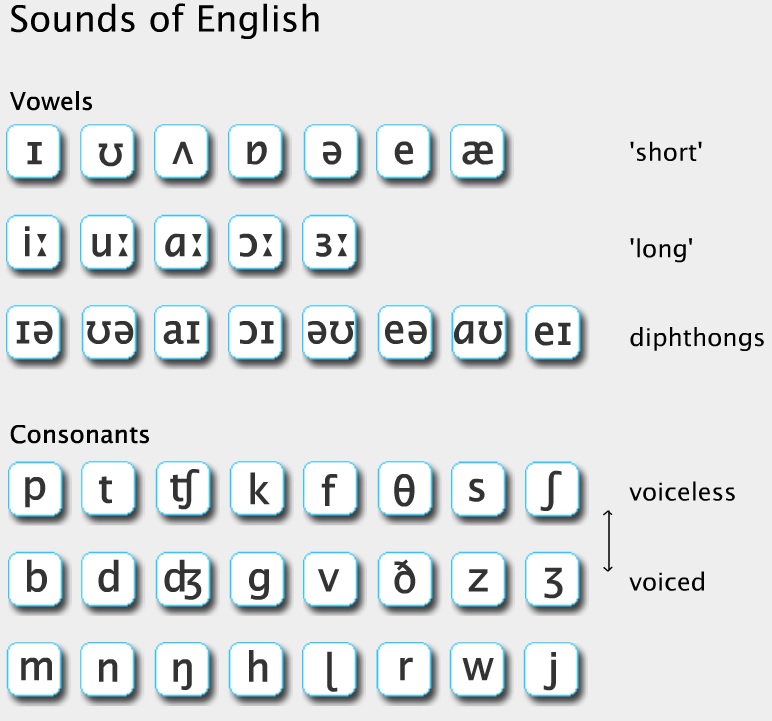Using the -s, -es, ‘s ending
There are four purposes for adding -s, -es, or ‘s to a word:
-
- To create a plural noun (cats)创造复数名词
- To conjugate a verb (snows)使动词变位(一般现在时第三人称单数形式)
- To show possession (coach’s, coaches’)显示所有格
- To create a contraction (coach’s meaning coach is or coach has)创造缩写形式
Note that ‘s can signal noun possession and the contracted form of the words is and has in spoken English. Sentence context must be used to discern whether coach’s means that the coach owns something or that it is a contraction of coach is or coach has. The pronunciation is the same whether the apostrophe is signaling a single owner (coach’s) or many owners (coaches’).注意,’s可以表示名词的拥有,在英语口语中是和has的收缩形式。句子的上下文必须用来辨别coach’s是指coach拥有某物还是coach is或coach has的收缩形式。无论撇号是表示单个所有者(coach’s)还是多个所有者(coaches’),发音都是一样的。
To simplify this pronunciation lesson, only the apostrophe s (‘s) spelling is being used.为了简化本节发音课,只使用了撇号s(’s)的拼写。
范老师的口头禅:清清浊浊,咝擦音后发/iz/
Pronunciation of -s, -es, ‘s endings
No matter the purpose or spelling of the -s, -es, ‘s ending, the pronunciation guidelines are the same. In English, the -s, -es, ‘s ending has three possible pronunciations:”s”、”es”、”s “结尾的发音。无论-s, -es, ‘s结尾的目的或拼法如何,发音指南都是一样的。在英语中,-s, -es, ‘s结尾有三种可能的发音。
1: -s, -es, ‘s ending pronounced as /ɪz/咝擦音
Pronounce the -s, -es, ‘s ending as as /ɪz/ when the final sound before the addition of the -s, -es, ‘s ending is any of the following:当 “s”、”es”、”s “结尾前的最后一个音是以下任何一个音时,将 “s”、”es”、”s “结尾读作/ɪz/。
1. /s/ ‘s sound‘: misses
3. /ʧ/ ‘ch sound‘: watches
5. /ʃ/ ‘sh sound‘: wishes
2: -s, -es, ‘s ending pronounced as /s/
When the final sound of the word is an unvoiced sound (except the sounds listed for pattern #1), the -s, -es, ‘s ending is pronounced as /s/. An unvoiced sound does not use the vocal cords during its production. Besides the sounds listed for #1, English has only five other unvoiced sounds that occur at the end of a word当单词的最后一个音是清辅音时(除了模式#1所列的音),-s,-es,’s结尾的发音为/s/。无声的音在发音时不使用声带。除了#1所列举的音,英语中只有其他五个清辅音出现在单词的结尾:
1. /p/ ‘p sound‘: stops
2. /k/ ‘k sound‘: looks
3. /t/ ‘t sound‘: cats
4. /θ/ ‘unvoiced th‘: Earth’s
5. /f/ ‘f sound‘: laughs
3: -s, -es, ‘s ending pronounced as /z/
When the final sound of the word is a voiced sound (except the sounds listed for pattern #1), the -s, -es, ‘s ending is pronounced as /z/. A voiced sound uses the vocal cords during its production. Since all vowel sounds are voiced, there are far more voiced sounds in English than unvoiced sounds. Besides the sounds listed for pattern #1, English has 10 other voiced consonant sounds that occur at the end of a word:
1. /b/ ‘b sound‘: describes
3. /d/ ‘d sound‘: words
4. /ð/ ‘voiced th‘: bathes
6. /l/ ‘l sound‘: calls
9. /n/ ‘n sound/: rains
10. /ŋ/ ‘ng sound‘: belongs
Example -s, -es, ‘s use in context
1. The dogs were barking all night long. (plural)
2. The dogs’ collars should be replaced. (plural possessive)
3. The dog’s sleeping in the bed again. (dog is)
